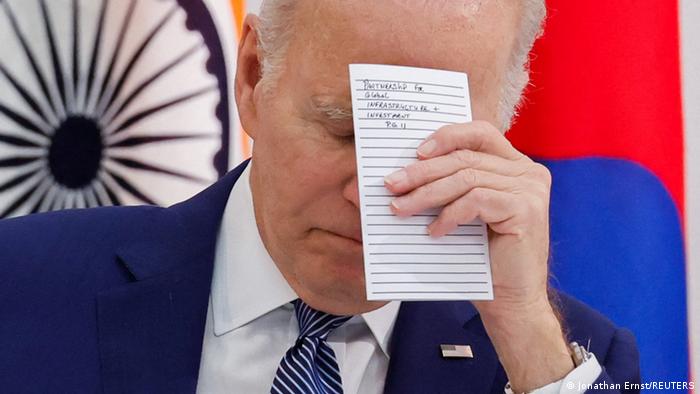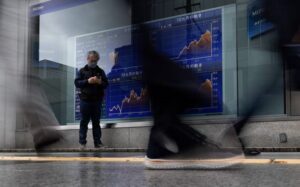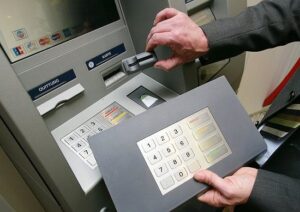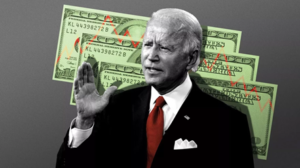
As we approach the month of June, the U.S. economy is at a crossroads due to discrepancies among the country’s major political forces. So far, they have failed to reach an agreement to raise the national debt ceiling, making it difficult to release funds to cover government expenditures and meet financial obligations.
Last Monday, House Speaker Kevin McCarthy and President Joe Biden met at the White House to discuss this matter, but failed to reach a consensus. At the same time, Treasury Secretary Janet Yellen sent a letter to congressional leaders urging them to act as soon as possible, warning that the resources available to meet the administration’s obligations could run out as early as June 1.
Republicans condition any deal on increasing borrowing on reducing the budget deficit, mainly through cuts in social programs such as tax breaks for green projects and student loan forgiveness. On the other hand, Democrats oppose these proposals and propose a tax increase or cuts in the defense budget, options that Republicans reject.
The situation is dangerous, as the United States could face a default scenario unless both political forces reach an agreement. The default of U.S. Treasuries, which are central to the global financial system, could trigger an economic downturn, falls in stock prices and a significant increase in the cost of credit.
However, many consider that this is unlikely to happen. According to a survey by the National Association for Business Economics, 55% of economists believe the debt limit will be raised, 42% think it will be suspended and only 3% think the United States will default.
Several experts consulted by The Wall Street Journal have raised three possible scenarios on how the confrontation over the debt ceiling could affect the economy and the financial system.

Scenario 1: Last minute agreement
The U.S. economy is already slowing due to rising interest rates, and many analysts are predicting an economic recession this year. The uncertainty generated by the lack of political consensus could lead consumers, investors and businesses to reduce their spending, increasing the chances of a recession, according to economist Joel Prakken of S&P Global Market Intelligence.
Prakken predicts that stock prices will start to fall as we approach June 1, and recalls that after the last-minute deal reached in 2011, the recovery in stock prices took months and the country’s credit rating was downgraded. Even if an agreement is reached before resources run out, there may remain a legacy of uncertainty that limits economic growth.
Scenario 2: Agreement after deadline
If the political negotiations drag on beyond June 1, financial markets could react more severely because of the real possibility of default.
If savings and investment accounts suddenly shrink, consumers could drastically cut their spending, which is vital to the U.S. economy. In addition, companies could suspend their hiring and investment plans.
The default would not begin on June 1 itself. According to Yellen, the liquidity exhaustion date could come days or weeks later. According to the Bipartisan Policy Center, in June the Treasury would spend $622.5 billion but only get $495 billion in tax revenue.
In this scenario, the government would prioritize debt repayment over other expenses, such as social security benefits. This would have a noticeable but less severe economic impact than defaulting on borrowing obligations, according to UBS economists.
Under this scenario, GDP is forecast to contract by 2% annually in the third quarter, and even more in the fourth quarter. In addition, a reduction of 250,000 jobs is projected in the second half of the year.
However, this economic downturn could have a silver lining: inflation is likely to decline, which aligns with the Federal Reserve’s goals, which could also cut interest rates to support the economy during this period of weakness.

Scenario 3: Lack of agreement
Failure to pay bills for days or weeks would have huge consequences for the economy. The value of Treasuries would fall due to sell-offs by investors.
Wendy Edelberg, an economist at the Brookings Institution, emphasizes that this would cause chaos in the global financial system, since Treasuries are considered one of the safest assets. According to Edelberg, this would occur when a benchmark asset becomes “one of the riskiest.”
On the other hand, Gregory Daco, chief economist at Ernst & Young, argues that a default would cause a more severe recession than the one experienced between 2007 and 2009.
The default would affect global flows of short-term dollar-denominated loans of several trillion dollars, which are critical for financing banking and corporate operations.
The decline in the value of bonds would have an impact on the balance sheets of investment funds, companies and banks that hold this type of debt. According to a White House report, this scenario would cause many investors to pull out of risky assets, resulting in a 45% drop in stock markets in the coming months, and an increase in unemployment by 5 percentage points.
UBS experts predict an economic contraction for four quarters if no deal is reached for a month. Rising interest rates due to Treasury yields would affect the consumer through credit cards, mortgages and auto loans.
Unlike the pandemic recession of 2020, when the U.S. economy lost more than 20 million jobs despite the injection of trillions of dollars of public stimulus, this time the government would not be able to provide support, according to the government report.









